



1 February
 Un Chien Andalou (Dir. Luis Bunuel/Salvador Dali, Fr, 1928) + L’Age d’Or (Dir. Luis Bunuel, Fr, 1930) (Screening Format – not known, 28/63 mins) The opening sequence of Un Chien Andalou, Buñuel’s first film, contains one of the most indelible images, and most primal “cuts”, in film history – the chillingly tranquil slicing of an eyeball with a razor blade. From there, Buñuel and collaborator Slvador Dali use a Surrealist version of narrative to thread together sequences involving a heterosexual couple, a disembodied hand and a rotting carcass inside a piano. Find out more at rogerebert.com. With recorded soundtrack. Close Up Cinema, Shoreditch Link
Un Chien Andalou (Dir. Luis Bunuel/Salvador Dali, Fr, 1928) + L’Age d’Or (Dir. Luis Bunuel, Fr, 1930) (Screening Format – not known, 28/63 mins) The opening sequence of Un Chien Andalou, Buñuel’s first film, contains one of the most indelible images, and most primal “cuts”, in film history – the chillingly tranquil slicing of an eyeball with a razor blade. From there, Buñuel and collaborator Slvador Dali use a Surrealist version of narrative to thread together sequences involving a heterosexual couple, a disembodied hand and a rotting carcass inside a piano. Find out more at rogerebert.com. With recorded soundtrack. Close Up Cinema, Shoreditch Link
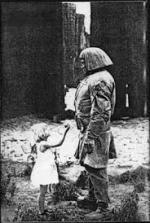 The Golem: How He Came Into The World (Dir. Carl Boese/Paul Wegener, Ger, 1920) (Screening Format – DCP, 94mins) The only one of three films directed by and starring Paul Wegener concerning the Golem, a figure from Jewish folklore, to have survived, this is, along with The Cabinet Of Dr. Caligari (Robert Wiene, 1920), one of the key works of Expressionism, as well as being one of the earliest and
The Golem: How He Came Into The World (Dir. Carl Boese/Paul Wegener, Ger, 1920) (Screening Format – DCP, 94mins) The only one of three films directed by and starring Paul Wegener concerning the Golem, a figure from Jewish folklore, to have survived, this is, along with The Cabinet Of Dr. Caligari (Robert Wiene, 1920), one of the key works of Expressionism, as well as being one of the earliest and  most influential horror films. In medieval Prague, Rabbi Loew fears disaster for the Jewish community at the hands of the Christian Emperor. To defend his people, he creates from clay the Golem, whose awakening leads to a series of disasters in this visual feast. Find out more atfilmmonthly.com . With a new score by composer Paul Robinson, performed live by his HarmonieBand. Square Chapel, Halifax Link
most influential horror films. In medieval Prague, Rabbi Loew fears disaster for the Jewish community at the hands of the Christian Emperor. To defend his people, he creates from clay the Golem, whose awakening leads to a series of disasters in this visual feast. Find out more atfilmmonthly.com . With a new score by composer Paul Robinson, performed live by his HarmonieBand. Square Chapel, Halifax Link
2 February
 Nosferatu (Dir. F W Murnau, 1922) (Screening format – not known, 96mins) A German Expressionist horror masterpiece starring Max Shreck as the vampire Count Orlok. The film was an unauthorised adaption of Bram Stoker’s ‘Dracula’ with names and other details changed because the studio could not obtain the rights to the novel. Stoker’s heirs sued over the adaption and a court ruling ordered that all copies of the film be destroyed. However, a few prints survived and the film came to be regarded as an inspirational masterwork of the cinema. In the film, Count Orlok travels across Europe leaving a trail of death in his wake. Brilliantly eerie, with imaginative touches which later adaptions never achieved. Find out more at wikipedia.org With live organ accompaniment by Donald MacKenzie. St Mary’s Church, Hitchin Link
Nosferatu (Dir. F W Murnau, 1922) (Screening format – not known, 96mins) A German Expressionist horror masterpiece starring Max Shreck as the vampire Count Orlok. The film was an unauthorised adaption of Bram Stoker’s ‘Dracula’ with names and other details changed because the studio could not obtain the rights to the novel. Stoker’s heirs sued over the adaption and a court ruling ordered that all copies of the film be destroyed. However, a few prints survived and the film came to be regarded as an inspirational masterwork of the cinema. In the film, Count Orlok travels across Europe leaving a trail of death in his wake. Brilliantly eerie, with imaginative touches which later adaptions never achieved. Find out more at wikipedia.org With live organ accompaniment by Donald MacKenzie. St Mary’s Church, Hitchin Link
 The Golem: How He Came Into The World (Dir. Carl Boese/Paul Wegener, Ger, 1920) (Screening Format – DCP, 94mins) The only one of three films directed by and starring Paul Wegener concerning the Golem, a figure from Jewish folklore, to have survived, this is, along with The Cabinet Of Dr. Caligari (Robert Wiene, 1920), one of the key works of Expressionism, as well as being one of the earliest and
The Golem: How He Came Into The World (Dir. Carl Boese/Paul Wegener, Ger, 1920) (Screening Format – DCP, 94mins) The only one of three films directed by and starring Paul Wegener concerning the Golem, a figure from Jewish folklore, to have survived, this is, along with The Cabinet Of Dr. Caligari (Robert Wiene, 1920), one of the key works of Expressionism, as well as being one of the earliest and 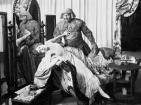 most influential horror films. In medieval Prague, Rabbi Loew fears disaster for the Jewish community at the hands of the Christian Emperor. To defend his people, he creates from clay the Golem, whose awakening leads to a series of disasters in this visual feast. Find out more atfilmmonthly.com . With a new score by composer Paul Robinson, performed live by his HarmonieBand. Showroom Cinema, Sheffield Link
most influential horror films. In medieval Prague, Rabbi Loew fears disaster for the Jewish community at the hands of the Christian Emperor. To defend his people, he creates from clay the Golem, whose awakening leads to a series of disasters in this visual feast. Find out more atfilmmonthly.com . With a new score by composer Paul Robinson, performed live by his HarmonieBand. Showroom Cinema, Sheffield Link
3 February
 Easy Street (Dir, Charles Chaplin, US, 1917) (Screening format – not known, 19 mins) . For Easy Street, his ninth film for Mutual and the most famous of the twelve he was contracted to make, Chaplin ordered the first of the T-shaped street sets to be built that he would consistently utilize to provide a perfect backdrop to his comedy. The look and feel of Easy Street evoke the South London of his childhood (the name “Easy Street” suggests “East Street,” the street possibly of
Easy Street (Dir, Charles Chaplin, US, 1917) (Screening format – not known, 19 mins) . For Easy Street, his ninth film for Mutual and the most famous of the twelve he was contracted to make, Chaplin ordered the first of the T-shaped street sets to be built that he would consistently utilize to provide a perfect backdrop to his comedy. The look and feel of Easy Street evoke the South London of his childhood (the name “Easy Street” suggests “East Street,” the street possibly of  Chaplin’s birth). Poverty, starvation, drug addiction, and urban violence—subjects that foreshadow the social concerns in his later films—are interwoven in “an exquisite short comedy” wrote critic Walter Kerr, “humor encapsulated in the regular rhythms of light verse.” . In the film, Charlie is a down-and-out derelict, sleeping at the steps of the religious mission . He is entranced by the beautiful mission worker and organist, Edna Purviance. Passing a police recruiting notice he decides to join but his ‘beat’ is Easy Street, terrorised by giant bully Eric Campbell! Upon its release, Easy Street was hailed as a watershed moment in Chaplin’s career.Find out more at silentsaregolden.com. With live accompaniment from the Horsham Symphony Orchestra performing a score written for the film by Neil Brand. The Capitol, Horsham Link
Chaplin’s birth). Poverty, starvation, drug addiction, and urban violence—subjects that foreshadow the social concerns in his later films—are interwoven in “an exquisite short comedy” wrote critic Walter Kerr, “humor encapsulated in the regular rhythms of light verse.” . In the film, Charlie is a down-and-out derelict, sleeping at the steps of the religious mission . He is entranced by the beautiful mission worker and organist, Edna Purviance. Passing a police recruiting notice he decides to join but his ‘beat’ is Easy Street, terrorised by giant bully Eric Campbell! Upon its release, Easy Street was hailed as a watershed moment in Chaplin’s career.Find out more at silentsaregolden.com. With live accompaniment from the Horsham Symphony Orchestra performing a score written for the film by Neil Brand. The Capitol, Horsham Link
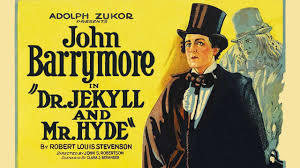 Dr. Jekyll and Mr. Hyde (Dir. John S Robertson, US, 1920) (Screening format – not known, 79mins) John Barrymore is dignified and virtuous as Dr Henry Jekyll, and transforms into the lascivious Mr. Hyde with almost no make-up beyond his gnarled, knobby fingers and greasy hair, relying almost solely on a bug-eyed grimace, a spidery body language and pure theatrical flourish. He may be somewhat
Dr. Jekyll and Mr. Hyde (Dir. John S Robertson, US, 1920) (Screening format – not known, 79mins) John Barrymore is dignified and virtuous as Dr Henry Jekyll, and transforms into the lascivious Mr. Hyde with almost no make-up beyond his gnarled, knobby fingers and greasy hair, relying almost solely on a bug-eyed grimace, a spidery body language and pure theatrical flourish. He may be somewhat 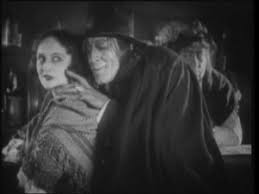 hammy as the leering beast of a thug but brings a tortured struggle to the repressed doctor, horrified at the demon he’s unleashed, guilty that he enjoys Hyde’s unrestrained life of drinking and whoring and terrified that he can no longer control the transformations. Martha Mansfield co-stars as his pure and innocent sweetheart, and Nita Naldi (the vamp of Blood and Sand) has a small but memorable role as the world-weary dance-hall darling who first wakens Jekyll’s baser nature. Find out more at moviessilently.com. With live musical accompaniment featuring a brand new score written by Dave Abbott. Leith Depot, Edinburgh Link
hammy as the leering beast of a thug but brings a tortured struggle to the repressed doctor, horrified at the demon he’s unleashed, guilty that he enjoys Hyde’s unrestrained life of drinking and whoring and terrified that he can no longer control the transformations. Martha Mansfield co-stars as his pure and innocent sweetheart, and Nita Naldi (the vamp of Blood and Sand) has a small but memorable role as the world-weary dance-hall darling who first wakens Jekyll’s baser nature. Find out more at moviessilently.com. With live musical accompaniment featuring a brand new score written by Dave Abbott. Leith Depot, Edinburgh Link
 He Who Gets Slapped (Dir. Victor Sjostrom, US, 1924) (Screening format – 35mm, 94mins) Paul Beaumont (Lon Chaney) is a talented scientist who has laboured for years to develop his theories on the origin of mankind. But on the eve of delivering the results of his research to the wider scientific
He Who Gets Slapped (Dir. Victor Sjostrom, US, 1924) (Screening format – 35mm, 94mins) Paul Beaumont (Lon Chaney) is a talented scientist who has laboured for years to develop his theories on the origin of mankind. But on the eve of delivering the results of his research to the wider scientific  community, Beaumont’s wife Marie and his wealthy patron Baron Regnard (Mark McDermott) conspire to steal his papers and the Baron himself claims the credit for Beaumont’s work. When Beaumont seeks redress he is slapped by the Baron and humiliated in front of the scientific community. Five years pass and Beaumont, now known only as ‘He’, is working as a circus clown in an act which consists of his getting slapped every
community, Beaumont’s wife Marie and his wealthy patron Baron Regnard (Mark McDermott) conspire to steal his papers and the Baron himself claims the credit for Beaumont’s work. When Beaumont seeks redress he is slapped by the Baron and humiliated in front of the scientific community. Five years pass and Beaumont, now known only as ‘He’, is working as a circus clown in an act which consists of his getting slapped every  evening by other clowns. He gradually falls in love with Consuelo (Norma Shearer) another performer but when he learns that she is to be forcibly married to baron Regard, the scene is set for high drama. A big critical and popular success on its first release, the film set a one-day world record with $15,000 in ticket sales, a one-week record of $71,900, and a two-week record of $121,574. The New York Times described the film as “… a picture which defies one to write about it without indulging in superlatives … so beautifully told, so flawlessly directed that we imagine it will be held up as a model by all producers.” Find out more at sensesofcinema.com. With live piano accompaniment by Taz Modi. Barbican, London Link
evening by other clowns. He gradually falls in love with Consuelo (Norma Shearer) another performer but when he learns that she is to be forcibly married to baron Regard, the scene is set for high drama. A big critical and popular success on its first release, the film set a one-day world record with $15,000 in ticket sales, a one-week record of $71,900, and a two-week record of $121,574. The New York Times described the film as “… a picture which defies one to write about it without indulging in superlatives … so beautifully told, so flawlessly directed that we imagine it will be held up as a model by all producers.” Find out more at sensesofcinema.com. With live piano accompaniment by Taz Modi. Barbican, London Link
 The Golem: How He Came Into The World (Dir. Carl Boese/Paul Wegener, Ger, 1920) (Screening Format – DCP, 94mins) The only one of three films directed by and starring Paul Wegener concerning the Golem, a figure from Jewish folklore, to have survived, this is, along with The Cabinet Of Dr. Caligari (Robert Wiene, 1920), one of the key works of Expressionism, as well as being one of the earliest and
The Golem: How He Came Into The World (Dir. Carl Boese/Paul Wegener, Ger, 1920) (Screening Format – DCP, 94mins) The only one of three films directed by and starring Paul Wegener concerning the Golem, a figure from Jewish folklore, to have survived, this is, along with The Cabinet Of Dr. Caligari (Robert Wiene, 1920), one of the key works of Expressionism, as well as being one of the earliest and 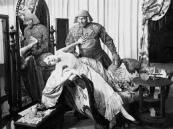 most influential horror films. In medieval Prague, Rabbi Loew fears disaster for the Jewish community at the hands of the Christian Emperor. To defend his people, he creates from clay the Golem, whose awakening leads to a series of disasters in this visual feast. Find out more atfilmmonthly.com . With a new score by composer Paul Robinson, performed live by his HarmonieBand. Home 2, Manchester Link
most influential horror films. In medieval Prague, Rabbi Loew fears disaster for the Jewish community at the hands of the Christian Emperor. To defend his people, he creates from clay the Golem, whose awakening leads to a series of disasters in this visual feast. Find out more atfilmmonthly.com . With a new score by composer Paul Robinson, performed live by his HarmonieBand. Home 2, Manchester Link
5 February
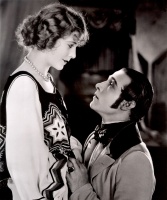 The Eagle (Dir. Clarence Brown, US, 1925) (Screening format – 16mm, 80mins) Based on a Pushkin short story, The Eagle centres upon a Russian Cossack officer (Valentino) who deserts rather than make love to Catherine the Great (Louise Dresser). Sentenced to death with a reward on his head for shunning the lusty Czarina, he escapes and becomes the Black Eagle, a dashing masked vigilante, and seeks to avenge the death of his father. However, our hero’s mission is complicated when he falls in love with his arch-enemy’s daughter (Vilma Banky) and consequently adopts a further disguise as a French tutor. Valentino delivers a charismatic and seductive performance in this delightful, witty adventure that shines with early Hollywood’s technical advances and stylish production values. Find out more at moviessilently.com. Introduced by acclaimed film historian Kevin Brownlow. With live musical accompaniment by Stephen Horne. Primrose Hill Community Library, London Link
The Eagle (Dir. Clarence Brown, US, 1925) (Screening format – 16mm, 80mins) Based on a Pushkin short story, The Eagle centres upon a Russian Cossack officer (Valentino) who deserts rather than make love to Catherine the Great (Louise Dresser). Sentenced to death with a reward on his head for shunning the lusty Czarina, he escapes and becomes the Black Eagle, a dashing masked vigilante, and seeks to avenge the death of his father. However, our hero’s mission is complicated when he falls in love with his arch-enemy’s daughter (Vilma Banky) and consequently adopts a further disguise as a French tutor. Valentino delivers a charismatic and seductive performance in this delightful, witty adventure that shines with early Hollywood’s technical advances and stylish production values. Find out more at moviessilently.com. Introduced by acclaimed film historian Kevin Brownlow. With live musical accompaniment by Stephen Horne. Primrose Hill Community Library, London Link
6 February
 The Lovers of an Old Criminal (aka An Old Gangster’s Moll) (Dir. Svatopluk Innemann, Cz, 1927) This is a restored Czech crazy slapstick comedy about the factory owner Mr Pardon and his uncle Mr Monday, who swap their identities and invent
The Lovers of an Old Criminal (aka An Old Gangster’s Moll) (Dir. Svatopluk Innemann, Cz, 1927) This is a restored Czech crazy slapstick comedy about the factory owner Mr Pardon and his uncle Mr Monday, who swap their identities and invent incredible stories to escape marriage and be with their beloveds. Starring one of Alfred Hitchcock’s muses Anny Ondra and “the King of Czech Comedians” Vlasta Burian, this silent movie excels for its original slapstick, especially the mélange of invented murders, chases, and doppelgänger scenes. Find out more at filmovyprehled.cz. Presented by the Kennington Bioscope. With live piano accompaniment. Cinema Museum, Lambeth, LondonLink
incredible stories to escape marriage and be with their beloveds. Starring one of Alfred Hitchcock’s muses Anny Ondra and “the King of Czech Comedians” Vlasta Burian, this silent movie excels for its original slapstick, especially the mélange of invented murders, chases, and doppelgänger scenes. Find out more at filmovyprehled.cz. Presented by the Kennington Bioscope. With live piano accompaniment. Cinema Museum, Lambeth, LondonLink
7 February
 Crossroads Of Youth (Dir. Ahn Jong-hwa, Korea, 1934) (Screening format – DCP, 73 Mins) Launching a BFI season on early Korean film, this screening is preceded by a richly illustrated talk from Chung Chong-hwa (Senior Researcher, Korean Film Archive) on the history of early film-making in Korea. Chung will
Crossroads Of Youth (Dir. Ahn Jong-hwa, Korea, 1934) (Screening format – DCP, 73 Mins) Launching a BFI season on early Korean film, this screening is preceded by a richly illustrated talk from Chung Chong-hwa (Senior Researcher, Korean Film Archive) on the history of early film-making in Korea. Chung will  discuss the complex journey to discovering these Early Korean Cinema prints, as well as their filmic and historical significance. Crossroads of Youth is the oldest surviving Korean film. This tale of love, desire, betrayal and revenge follows a young man as he seeks his fortune on the streets of Seoul. Find out more at notcoming.com. With live musical accompaniment from composer Park Chun-hwi, ‘byeonsa’ narration from Cho Hee-bong and live supplementary performances from actors Hwang Min-su and Park Hee-von, recreating an experience comparable to what Korean audiences saw and heard when it first premiered in 1934. BFI Southbank, London Link
discuss the complex journey to discovering these Early Korean Cinema prints, as well as their filmic and historical significance. Crossroads of Youth is the oldest surviving Korean film. This tale of love, desire, betrayal and revenge follows a young man as he seeks his fortune on the streets of Seoul. Find out more at notcoming.com. With live musical accompaniment from composer Park Chun-hwi, ‘byeonsa’ narration from Cho Hee-bong and live supplementary performances from actors Hwang Min-su and Park Hee-von, recreating an experience comparable to what Korean audiences saw and heard when it first premiered in 1934. BFI Southbank, London Link
8 February
 Wonder of Creation(Dir. Hanns Walter Kornblum, Ger, 1925) (Screening format – not known, 92mins) The extraordinary silent documentary, Wunder der Schöpfung (‘Wonder of Creation’), is a unique document of human knowledge about the world and the universe in the 1920s. Fifteen special effects experts and nine cameramen were involved in the production of this beautifully tinted and toned film that combines
Wonder of Creation(Dir. Hanns Walter Kornblum, Ger, 1925) (Screening format – not known, 92mins) The extraordinary silent documentary, Wunder der Schöpfung (‘Wonder of Creation’), is a unique document of human knowledge about the world and the universe in the 1920s. Fifteen special effects experts and nine cameramen were involved in the production of this beautifully tinted and toned film that combines  documentary scenes, historical documents, fiction elements, animation scenes and educational impact.Wunder der Schöpfung is a classic example of German Kulturfilm, which predate documentaries as we know them today. They were often high-quality productions involving collaboration between mainstream film-makers and academics.Wunder der Schöpfung gives us a glimpse of astronomical knowledge circa 1925, it cleverly uses trick photography and animation to visualise scientific theories. Find out more at wikipedia.org. With live musical accompaniment by Herschel 36 (musicians Stu Brown and Paul Harrison) reprising their acclaimed score for the film, commissioned by the Hippodrome Silent Film Festival in 2016. An Lanntair, Shetland Link
documentary scenes, historical documents, fiction elements, animation scenes and educational impact.Wunder der Schöpfung is a classic example of German Kulturfilm, which predate documentaries as we know them today. They were often high-quality productions involving collaboration between mainstream film-makers and academics.Wunder der Schöpfung gives us a glimpse of astronomical knowledge circa 1925, it cleverly uses trick photography and animation to visualise scientific theories. Find out more at wikipedia.org. With live musical accompaniment by Herschel 36 (musicians Stu Brown and Paul Harrison) reprising their acclaimed score for the film, commissioned by the Hippodrome Silent Film Festival in 2016. An Lanntair, Shetland Link
9 February
 Our Hospitality (Dir. Buster Keaton/John G Blystone, US, 1923) (Screening format – not known, 73mins) Our Hospitality is a riotous satire of family feuds and Southern codes of honor. In 1831, Keaton leaves his home in New York to take charge of his family mansion down South. En route, Keaton befriends pretty Natalie Talmadge (Keaton’s real-life wife at the time), who invites him to dine at her family home. Upon meeting Talmadge’s father and brothers, Keaton learns that he is the last surviving member of a family with whom Talmadge’s kin have been feuding for over 20 years. The brothers are all for killing Keaton on the spot, but Talmadge’s father insists that the rules of hospitality be observed: so long as Keaton is a guest in the house, he will not be harmed. Thus, Keaton spends the next few reels alternately planning to sneak out of the mansion without being noticed or contriving to remain within its walls as long as possible. But once he is out of the house the chase is on, with the father and brothers in hot pursuit. In the climactic waterfall stunt a dummy stood in for Talmadge but Keaton used no doubles, and nearly lost his life as a result. This 7-reel silent film represents the only joint appearance of Buster Keaton and Natalie Talmadge; Keaton hoped that by spending several weeks on location with his wife, he could patch up their shaky marriage (it didn’t work). Also appearing are two other members of the Keaton family: Keaton’s ex-vaudevillian father Joe (who performs an eye-popping “high kick”) and his son Joseph Keaton IV, playing Buster as a baby. Find out more at wikipedia.orgWith live piano accompaniment by Vincent Byrne. Holy Trinity Church, Sutton Coldfield link
Our Hospitality (Dir. Buster Keaton/John G Blystone, US, 1923) (Screening format – not known, 73mins) Our Hospitality is a riotous satire of family feuds and Southern codes of honor. In 1831, Keaton leaves his home in New York to take charge of his family mansion down South. En route, Keaton befriends pretty Natalie Talmadge (Keaton’s real-life wife at the time), who invites him to dine at her family home. Upon meeting Talmadge’s father and brothers, Keaton learns that he is the last surviving member of a family with whom Talmadge’s kin have been feuding for over 20 years. The brothers are all for killing Keaton on the spot, but Talmadge’s father insists that the rules of hospitality be observed: so long as Keaton is a guest in the house, he will not be harmed. Thus, Keaton spends the next few reels alternately planning to sneak out of the mansion without being noticed or contriving to remain within its walls as long as possible. But once he is out of the house the chase is on, with the father and brothers in hot pursuit. In the climactic waterfall stunt a dummy stood in for Talmadge but Keaton used no doubles, and nearly lost his life as a result. This 7-reel silent film represents the only joint appearance of Buster Keaton and Natalie Talmadge; Keaton hoped that by spending several weeks on location with his wife, he could patch up their shaky marriage (it didn’t work). Also appearing are two other members of the Keaton family: Keaton’s ex-vaudevillian father Joe (who performs an eye-popping “high kick”) and his son Joseph Keaton IV, playing Buster as a baby. Find out more at wikipedia.orgWith live piano accompaniment by Vincent Byrne. Holy Trinity Church, Sutton Coldfield link
 Phantom Of The Opera (Dir. Rupert Julian, 1925) (Screening format – not known, 103mins) A title that needs no introduction, The Phantom of the Opera has spawned many remakes, remasters and sequels. This original film version, produced with moments of early Technicolour, sees Lon Chaney, the ‘Man of a Thousand Faces’ perform one of his most iconic roles. His ghastly make-up and outrageous performance made this title a benchmark in the American silent film era. The film was a critical and commercial success upon release, and still stands as an important film in cinematic history to this day, with press quotes from the time labeling the film an ‘ultra-fantastic melodrama’ (New York Times), ‘produced on a stupendous scale’ (Moving Picture World) and ‘probably the greatest inducement to nightmare that has yet been screened’ (Variety). The mysterious phantom (Lon Chaney) is a vengeful composer living in the catacombs under the Paris Opera House, determined to promote the career of the singer he loves (Mary Philbin). Famed for the phantom’s shock unmasking, incredible set designs and the masked ball sequence, it still packs a punch. Find out more at wikipedia.org. With live musical accompaniment by acclaimed musicians Minima. Sturminster Memorial Hall, Wimborne, Dorset Link
Phantom Of The Opera (Dir. Rupert Julian, 1925) (Screening format – not known, 103mins) A title that needs no introduction, The Phantom of the Opera has spawned many remakes, remasters and sequels. This original film version, produced with moments of early Technicolour, sees Lon Chaney, the ‘Man of a Thousand Faces’ perform one of his most iconic roles. His ghastly make-up and outrageous performance made this title a benchmark in the American silent film era. The film was a critical and commercial success upon release, and still stands as an important film in cinematic history to this day, with press quotes from the time labeling the film an ‘ultra-fantastic melodrama’ (New York Times), ‘produced on a stupendous scale’ (Moving Picture World) and ‘probably the greatest inducement to nightmare that has yet been screened’ (Variety). The mysterious phantom (Lon Chaney) is a vengeful composer living in the catacombs under the Paris Opera House, determined to promote the career of the singer he loves (Mary Philbin). Famed for the phantom’s shock unmasking, incredible set designs and the masked ball sequence, it still packs a punch. Find out more at wikipedia.org. With live musical accompaniment by acclaimed musicians Minima. Sturminster Memorial Hall, Wimborne, Dorset Link
 Wonder of Creation (Dir. Hanns Walter Kornblum, Ger, 1925) (Screening format – not known, 92mins) The extraordinary silent documentary, Wunder der Schöpfung (‘Wonder of Creation’), is a unique document of human knowledge about the world and the universe in the 1920s. Fifteen special effects experts and nine cameramen were involved in the production of this beautifully tinted and toned film
Wonder of Creation (Dir. Hanns Walter Kornblum, Ger, 1925) (Screening format – not known, 92mins) The extraordinary silent documentary, Wunder der Schöpfung (‘Wonder of Creation’), is a unique document of human knowledge about the world and the universe in the 1920s. Fifteen special effects experts and nine cameramen were involved in the production of this beautifully tinted and toned film 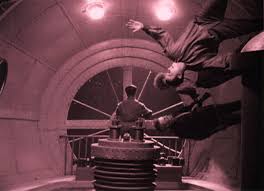 that combines documentary scenes, historical documents, fiction elements, animation scenes and educational impact. Wunder der Schöpfung is a classic example of German Kulturfilm, which predate documentaries as we know them today. They were often high-quality productions involving collaboration between mainstream film-makers and academics. Wunder der Schöpfung gives us a glimpse of astronomical knowledge circa 1925, it cleverly uses trick photography and animation to visualise scientific theories. Find out more at wikipedia.org. With live musical accompaniment by Herschel 36 (musicians Stu Brown and Paul Harrison) reprising their acclaimed score for the film, commissioned by the Hippodrome Silent Film Festival in 2016. Sabhal Mòr Ostaig, Sleat, Skye Link
that combines documentary scenes, historical documents, fiction elements, animation scenes and educational impact. Wunder der Schöpfung is a classic example of German Kulturfilm, which predate documentaries as we know them today. They were often high-quality productions involving collaboration between mainstream film-makers and academics. Wunder der Schöpfung gives us a glimpse of astronomical knowledge circa 1925, it cleverly uses trick photography and animation to visualise scientific theories. Find out more at wikipedia.org. With live musical accompaniment by Herschel 36 (musicians Stu Brown and Paul Harrison) reprising their acclaimed score for the film, commissioned by the Hippodrome Silent Film Festival in 2016. Sabhal Mòr Ostaig, Sleat, Skye Link
 The General (Dir. Buster Keaton/Clyde Bruckman, 1926) (Screening format – not known, 75mins) Widely considered one of the greatest films ever made and one of the most revered comedies of the silent era, Buster Keaton’s effortless masterpiece sees hapless Southern railroad engineer Johnny Gray (Keaton) facing off against Union soldiers during the American Civil War. When Johnny’s fiancée, Annabelle Lee (Marion Mack), is accidentally taken away while on a train stolen by Northern forces, Gray pursues the soldiers, using various modes of transportation in comic action scenes that highlight Keaton’s boundless, innovative wit and joyful, lighthearted dexterity, to reclaim the train and thereby save the South. Find out more atbusterkeaton.com . With live piano accompaniment by Neil Brand. St John’s Church, Epping Link
The General (Dir. Buster Keaton/Clyde Bruckman, 1926) (Screening format – not known, 75mins) Widely considered one of the greatest films ever made and one of the most revered comedies of the silent era, Buster Keaton’s effortless masterpiece sees hapless Southern railroad engineer Johnny Gray (Keaton) facing off against Union soldiers during the American Civil War. When Johnny’s fiancée, Annabelle Lee (Marion Mack), is accidentally taken away while on a train stolen by Northern forces, Gray pursues the soldiers, using various modes of transportation in comic action scenes that highlight Keaton’s boundless, innovative wit and joyful, lighthearted dexterity, to reclaim the train and thereby save the South. Find out more atbusterkeaton.com . With live piano accompaniment by Neil Brand. St John’s Church, Epping Link
10 February
 Borderline (Dir. Kenneth Macpherson, UK, 1930) (Screening format – not known, 63mins) A classic work of the British avant-garde and Paul Robeson’s second ever screen appearance, this rarely screened title is the only surviving film made by the POOL group: Kenneth Macpherson, Hilda Doolittle (H D) and Annie Winifred Ellerman (Bryher). Made in 1930, at a time when there was substantial censorship of homosexual texts in England, this groundbreaking silent film fizzed with inter-racial sexual tension and implicit
Borderline (Dir. Kenneth Macpherson, UK, 1930) (Screening format – not known, 63mins) A classic work of the British avant-garde and Paul Robeson’s second ever screen appearance, this rarely screened title is the only surviving film made by the POOL group: Kenneth Macpherson, Hilda Doolittle (H D) and Annie Winifred Ellerman (Bryher). Made in 1930, at a time when there was substantial censorship of homosexual texts in England, this groundbreaking silent film fizzed with inter-racial sexual tension and implicit 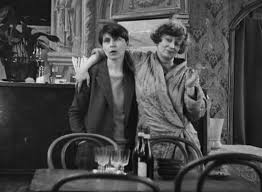 homoerotic subjectivity. The action takes place in a Weimar-esque café and guest house in an anonymous provincial small town, a tense, deadly inter-racial love triangle emerges through rapid combinations of glances, scenes and images. Unconventional in form, the film’s psychological realism is achieved through the use of these montage techniques. Robeson was something of a celebrity in Europe at this time, but as this film is silent, it did not make use of his deep baritone voice. Find out more at anothergaze.com. Accompanied with a new live improvised soundtrack performed by electronic artist Mr WobblyHead, and featuring the rich and powerful vocals of alternative RnB artist M.I Hyde Park PictureHouse, Leeds. Link
homoerotic subjectivity. The action takes place in a Weimar-esque café and guest house in an anonymous provincial small town, a tense, deadly inter-racial love triangle emerges through rapid combinations of glances, scenes and images. Unconventional in form, the film’s psychological realism is achieved through the use of these montage techniques. Robeson was something of a celebrity in Europe at this time, but as this film is silent, it did not make use of his deep baritone voice. Find out more at anothergaze.com. Accompanied with a new live improvised soundtrack performed by electronic artist Mr WobblyHead, and featuring the rich and powerful vocals of alternative RnB artist M.I Hyde Park PictureHouse, Leeds. Link
14 February
 Phantom Of The Opera (Dir. Rupert Julian, 1925) (Screening format – not known, 103mins) A title that needs no introduction, The Phantom of the Opera has spawned many remakes, remasters and sequels. This original film version, produced with moments of early Technicolour, sees Lon Chaney, the ‘Man of a Thousand Faces’ perform one of his most iconic roles. His ghastly make-up and outrageous performance made this title a benchmark in the American silent film era. The film was a critical and commercial success upon release, and still stands as an important film in cinematic history to this day, with press quotes from the time labeling the film an ‘ultra-fantastic melodrama’ (New York Times), ‘produced on a stupendous scale’ (Moving Picture World) and ‘probably the greatest inducement to nightmare that has yet been screened’ (Variety). The mysterious phantom (Lon Chaney) is a vengeful composer living in the catacombs under the Paris Opera House, determined to promote the career of the singer he loves (Mary Philbin). Famed for the phantom’s shock unmasking, incredible set designs and the masked ball sequence, it still packs a punch. Find out more at wikipedia.org. With live musical accompaniment by acclaimed musicians Minima. Gillingham School Theatre, Gillingham, Dorset Link
Phantom Of The Opera (Dir. Rupert Julian, 1925) (Screening format – not known, 103mins) A title that needs no introduction, The Phantom of the Opera has spawned many remakes, remasters and sequels. This original film version, produced with moments of early Technicolour, sees Lon Chaney, the ‘Man of a Thousand Faces’ perform one of his most iconic roles. His ghastly make-up and outrageous performance made this title a benchmark in the American silent film era. The film was a critical and commercial success upon release, and still stands as an important film in cinematic history to this day, with press quotes from the time labeling the film an ‘ultra-fantastic melodrama’ (New York Times), ‘produced on a stupendous scale’ (Moving Picture World) and ‘probably the greatest inducement to nightmare that has yet been screened’ (Variety). The mysterious phantom (Lon Chaney) is a vengeful composer living in the catacombs under the Paris Opera House, determined to promote the career of the singer he loves (Mary Philbin). Famed for the phantom’s shock unmasking, incredible set designs and the masked ball sequence, it still packs a punch. Find out more at wikipedia.org. With live musical accompaniment by acclaimed musicians Minima. Gillingham School Theatre, Gillingham, Dorset Link
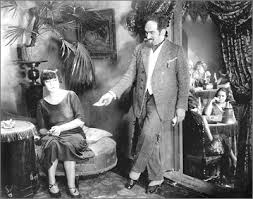 The Joyless Street (Dir. G W Pabst, Ger, 1925) (Screening format – not known, 151mins) The Joyless Street, based on the novel by Hugo Bettauer, directed by Georg Wilhelm Pabst in Germany, and starring Greta Garbo in her second major role, is not only one of the most important films of the Weimar Republic, it is also one of the most spectacular censorship cases of the era. The story from the inflationary
The Joyless Street (Dir. G W Pabst, Ger, 1925) (Screening format – not known, 151mins) The Joyless Street, based on the novel by Hugo Bettauer, directed by Georg Wilhelm Pabst in Germany, and starring Greta Garbo in her second major role, is not only one of the most important films of the Weimar Republic, it is also one of the most spectacular censorship cases of the era. The story from the inflationary  period in Vienna in the years immediately after World War I was considered too much of a provocation: nouveau riches currency and stock market speculators who wallow in Babylonian luxury, homeless and unemployed Lumpenproletariat living in barns, women who sell their souls for a bit of fresh meat at the butcher’s, sexual orgies, bordellos and murders. The film is often described as a morality story in which the ‘fallen woman’ suffers for her sins, while the more virtuous is rewarded. Find out more at silentfilm.org With live piano accompaniment by John Sweeney. Austrian Cultural Forum, London SW7 Link
period in Vienna in the years immediately after World War I was considered too much of a provocation: nouveau riches currency and stock market speculators who wallow in Babylonian luxury, homeless and unemployed Lumpenproletariat living in barns, women who sell their souls for a bit of fresh meat at the butcher’s, sexual orgies, bordellos and murders. The film is often described as a morality story in which the ‘fallen woman’ suffers for her sins, while the more virtuous is rewarded. Find out more at silentfilm.org With live piano accompaniment by John Sweeney. Austrian Cultural Forum, London SW7 Link
16 February
 Wonder of Creation(Dir. Hanns Walter Kornblum, Ger, 1925) (Screening format – not known, 92mins) The extraordinary silent documentary, Wunder der Schöpfung (‘Wonder of Creation’), is a unique document of human knowledge about the world and the universe in the 1920s. Fifteen special effects experts and nine cameramen were involved in the production of this beautifully tinted and toned film that combines documentary scenes, historical
Wonder of Creation(Dir. Hanns Walter Kornblum, Ger, 1925) (Screening format – not known, 92mins) The extraordinary silent documentary, Wunder der Schöpfung (‘Wonder of Creation’), is a unique document of human knowledge about the world and the universe in the 1920s. Fifteen special effects experts and nine cameramen were involved in the production of this beautifully tinted and toned film that combines documentary scenes, historical 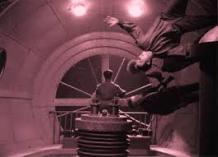 documents, fiction elements, animation scenes and educational impact.Wunder der Schöpfung is a classic example of German Kulturfilm, which predate documentaries as we know them today. They were often high-quality productions involving collaboration between mainstream film-makers and academics.Wunder der Schöpfung gives us a glimpse of astronomical knowledge circa 1925, it cleverly uses trick photography and animation to visualise scientific theories. Find out more at wikipedia.org. With live musical accompaniment by Herschel 36 (musicians Stu Brown and Paul Harrison) reprising their acclaimed score for the film, commissioned by the Hippodrome Silent Film Festival in 2016. The Harris, Preston Link
documents, fiction elements, animation scenes and educational impact.Wunder der Schöpfung is a classic example of German Kulturfilm, which predate documentaries as we know them today. They were often high-quality productions involving collaboration between mainstream film-makers and academics.Wunder der Schöpfung gives us a glimpse of astronomical knowledge circa 1925, it cleverly uses trick photography and animation to visualise scientific theories. Find out more at wikipedia.org. With live musical accompaniment by Herschel 36 (musicians Stu Brown and Paul Harrison) reprising their acclaimed score for the film, commissioned by the Hippodrome Silent Film Festival in 2016. The Harris, Preston Link
17 February
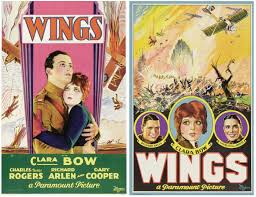 Wings (Dir. William Wellman, USA, 1927) (Screening format – not known, 144mins) In 1917, in a small American town, Jack Powell (Charles Rogers) tinkers on a car, while daydreaming about airplanes. When the car is roadworthy, Jack names it “Shooting Star” and Mary Preston (Clara Bow), the girl next door who helped him, paints a star on the side of the vehicle. Oblivious to the infatuated Mary’s feelings for him, Jack invites a more sophisticated city girl, Sylvia Lewis, to accompany him on the first drive. Sylvia rides with Jack, but she is in love with David Armstrong (Richard Arlen), the son of the town’s wealthiest family. Later, when the United States enters World War I, Jack and David enlist and apply to aviation school. Before they leave, Sylvia signs a picture of herself and puts it in a locket for David, but when Jack sees it and thinks it is meant for him, she does not have the heart to contradict him. David, who returns Sylvia’s affection, is hurt, but she takes him aside and explains that, although Jack has her picture, David has her heart…. But will friendship and relationships survive the tragedy and drama of the war
Wings (Dir. William Wellman, USA, 1927) (Screening format – not known, 144mins) In 1917, in a small American town, Jack Powell (Charles Rogers) tinkers on a car, while daydreaming about airplanes. When the car is roadworthy, Jack names it “Shooting Star” and Mary Preston (Clara Bow), the girl next door who helped him, paints a star on the side of the vehicle. Oblivious to the infatuated Mary’s feelings for him, Jack invites a more sophisticated city girl, Sylvia Lewis, to accompany him on the first drive. Sylvia rides with Jack, but she is in love with David Armstrong (Richard Arlen), the son of the town’s wealthiest family. Later, when the United States enters World War I, Jack and David enlist and apply to aviation school. Before they leave, Sylvia signs a picture of herself and puts it in a locket for David, but when Jack sees it and thinks it is meant for him, she does not have the heart to contradict him. David, who returns Sylvia’s affection, is hurt, but she takes him aside and explains that, although Jack has her picture, David has her heart…. But will friendship and relationships survive the tragedy and drama of the war  years. Made only nine years after the end of the First World War, the film was written by John Monk Saunders, a veteran pilot who who also wrote Howard Hawks’ classic The Dawn Patrol, filmed three years later. Saunders hadn’t actually served in France, a matter of bitter regret to him himself, but he was a flight instructor in the First World War and a member of the Lost Generation who eventually killed himself. Wellman himself did serve in France and was mentally and physically scarred for life – so they knew their stuff. For example, Wellman insisted on waiting a month for the “right cloud formations”, much to the fury of the bosses at Paramount – but the power of the flight sequences, with all the piles of cloud glimpsed from and around the planes, shows he was right. On August 12, 1927, the curtain rose on the grand premiere of Wings, by now Wellman’s two-million-dollar epic. Boasting thrills and adventure, star power, and unparalleled aerial photography, the film was an immediate smash, running at New York’s Criterion Theater for sixty-three consecutive weeks and capturing the top honor for Outstanding Production at the inaugural Academy Awards ceremony. Find out more at theguardian.com. With live organ accompaniment by Donald MacKenzie. The Musical Museum, Brentford Link
years. Made only nine years after the end of the First World War, the film was written by John Monk Saunders, a veteran pilot who who also wrote Howard Hawks’ classic The Dawn Patrol, filmed three years later. Saunders hadn’t actually served in France, a matter of bitter regret to him himself, but he was a flight instructor in the First World War and a member of the Lost Generation who eventually killed himself. Wellman himself did serve in France and was mentally and physically scarred for life – so they knew their stuff. For example, Wellman insisted on waiting a month for the “right cloud formations”, much to the fury of the bosses at Paramount – but the power of the flight sequences, with all the piles of cloud glimpsed from and around the planes, shows he was right. On August 12, 1927, the curtain rose on the grand premiere of Wings, by now Wellman’s two-million-dollar epic. Boasting thrills and adventure, star power, and unparalleled aerial photography, the film was an immediate smash, running at New York’s Criterion Theater for sixty-three consecutive weeks and capturing the top honor for Outstanding Production at the inaugural Academy Awards ceremony. Find out more at theguardian.com. With live organ accompaniment by Donald MacKenzie. The Musical Museum, Brentford Link
21 February
 AThrow Of Dice (Dir. Franz Osten, In/Ger, 1929) (Screening format – not known, 74mins) After the beautiful Sunita nurses Ranjit back to health following dramatic events during a royal tiger hunt, his wicked rival Sohat persuades him to risk his kingdom and his love in a fateful game of dice. A Throw of Dice (Prapancha Pash) is the third film in a pioneering trilogy of silent films made through a unique partnership between German director Franz Osten and Indian actor-producer Himansu Rai, whose films combined documentary techniques with narratives derived from Indian myths and legends. Shot on location in Rajasthan, the film features over 10,000 extras and an impressive array of horses, elephants and tigers. Its star actors all had major careers in Indian cinema and remain legendary and much-loved figures. Find out more at memsaabstory.com. A South West Silents presentation. The evening will also include screenings of home movies from India from the British Empire and Commonwealth Collection. With a brand new live musical accompaniment by pianist Stephen Horne and Jeevan Singh on percussion (tabla & dhol). Museum & Art Gallery, Bristol Link
AThrow Of Dice (Dir. Franz Osten, In/Ger, 1929) (Screening format – not known, 74mins) After the beautiful Sunita nurses Ranjit back to health following dramatic events during a royal tiger hunt, his wicked rival Sohat persuades him to risk his kingdom and his love in a fateful game of dice. A Throw of Dice (Prapancha Pash) is the third film in a pioneering trilogy of silent films made through a unique partnership between German director Franz Osten and Indian actor-producer Himansu Rai, whose films combined documentary techniques with narratives derived from Indian myths and legends. Shot on location in Rajasthan, the film features over 10,000 extras and an impressive array of horses, elephants and tigers. Its star actors all had major careers in Indian cinema and remain legendary and much-loved figures. Find out more at memsaabstory.com. A South West Silents presentation. The evening will also include screenings of home movies from India from the British Empire and Commonwealth Collection. With a brand new live musical accompaniment by pianist Stephen Horne and Jeevan Singh on percussion (tabla & dhol). Museum & Art Gallery, Bristol Link
22 February
 The Beloved Rogue (Dir. Alan Crosland, US, 1927) (Screening format – not known, 94mins) A lavish spectacle boasting the set designs of Oscar winning art director William Cameron Menzies (The Thief of Baghdad), The Beloved Rogue is Hollywood myth-making at its most ambitious…and entertaining. Hollywood star John Barrymore sought to out-swashbuckle Douglas Fairbanks in his breathless depiction of France’s rapscallion poet, thief and vagabond: François Villon (1431-1463). To prove his
The Beloved Rogue (Dir. Alan Crosland, US, 1927) (Screening format – not known, 94mins) A lavish spectacle boasting the set designs of Oscar winning art director William Cameron Menzies (The Thief of Baghdad), The Beloved Rogue is Hollywood myth-making at its most ambitious…and entertaining. Hollywood star John Barrymore sought to out-swashbuckle Douglas Fairbanks in his breathless depiction of France’s rapscallion poet, thief and vagabond: François Villon (1431-1463). To prove his  mettle, he bounds over the snowy rooftops of Paris, scales a castle tower, and is hurled skyward by the royal catapult, but this is no mere stunt picture. Barrymore wielded a simmering sexuality that Fairbanks lacked, endowing the film with an element of eroticism that perfectly suits Villon, who loved “France earnestly, Frenchwomen excessively, French wine exclusively.” Beyond Barrymore, the cast is sprinkled with celebrated character actors. Fresh from a series of diabolical roles in the German silent cinema, Conrad Veidt (The Man Who Laughs, Casablanca) made his American film debut as the sinister King Louis XI. Appearing here as the scheming Thibault d’Aussigny and François’s sidekick Beppo the Dwarf, Henry Victor and Angelo Rossitto would reunite five years later in Tod Browning’s Freaks. The Beloved Rogue is a star studded action packed roller coaster which symbolises the true greatness of Hollywood in the silent era. Find out more at moviessilently.com. Presented by South West Silents. With live musical accompaniment by Stephen Horne. Cube Cinema, Bristol Link
mettle, he bounds over the snowy rooftops of Paris, scales a castle tower, and is hurled skyward by the royal catapult, but this is no mere stunt picture. Barrymore wielded a simmering sexuality that Fairbanks lacked, endowing the film with an element of eroticism that perfectly suits Villon, who loved “France earnestly, Frenchwomen excessively, French wine exclusively.” Beyond Barrymore, the cast is sprinkled with celebrated character actors. Fresh from a series of diabolical roles in the German silent cinema, Conrad Veidt (The Man Who Laughs, Casablanca) made his American film debut as the sinister King Louis XI. Appearing here as the scheming Thibault d’Aussigny and François’s sidekick Beppo the Dwarf, Henry Victor and Angelo Rossitto would reunite five years later in Tod Browning’s Freaks. The Beloved Rogue is a star studded action packed roller coaster which symbolises the true greatness of Hollywood in the silent era. Find out more at moviessilently.com. Presented by South West Silents. With live musical accompaniment by Stephen Horne. Cube Cinema, Bristol Link
 Diary Of A Lost Girl (Dir. G W Pabst, Ger, 1929) (Screening format – not known, 106mins)A masterpiece of the German silent era, Diary of a Lost Girl was the second and final collaboration of actress Louise Brooks and director G.W. Pabst a mere months after their first collaboration in the now-legendary Pandora’s Box
Diary Of A Lost Girl (Dir. G W Pabst, Ger, 1929) (Screening format – not known, 106mins)A masterpiece of the German silent era, Diary of a Lost Girl was the second and final collaboration of actress Louise Brooks and director G.W. Pabst a mere months after their first collaboration in the now-legendary Pandora’s Box  (1929). Brooks plays Thymian Henning, a beautiful young woman raped by an unscrupulous character employed at her father’s pharmacy (played with gusto by Fritz Rasp, the degenerate villain of such Fritz Lang classics as Metropolis, Spione, and Frau im Mond). After Thymian gives birth to his child and rejects her family’s expectations of marriage, the baby is torn from her care, and Thymian enters a purgatorial reform school that seems less an institute of learning than a conduit for fulfilling the headmistress’s sadistic sexual fantasies. Find out more at rogerebert.com With live musical accompaniment by Wurlitza. St Dominick Village Hall, St Dominick, Cornwall Link
(1929). Brooks plays Thymian Henning, a beautiful young woman raped by an unscrupulous character employed at her father’s pharmacy (played with gusto by Fritz Rasp, the degenerate villain of such Fritz Lang classics as Metropolis, Spione, and Frau im Mond). After Thymian gives birth to his child and rejects her family’s expectations of marriage, the baby is torn from her care, and Thymian enters a purgatorial reform school that seems less an institute of learning than a conduit for fulfilling the headmistress’s sadistic sexual fantasies. Find out more at rogerebert.com With live musical accompaniment by Wurlitza. St Dominick Village Hall, St Dominick, Cornwall Link
23 February
 Speedy (Dir. Ted Wilde, US, 1928) (Screening format – Not known, 86mins) Harold Lloyd’s final silent film sees him reprise his ‘glasses character’ as a baseball-obsessed New Yorker (the film features a cameo from the legendary Babe Ruth) who becomes determined to save the city’s last horse-drawn streetcar, motivated in no small part by its owner being the grandfather of his love interest. Filled with Lloyd’s trademark rapid-fire visual humour and elaborate set-ups, it’s a fine example of his innovative approach to comedy. Find out more at allmovie.com. With live musical accompaniment by the Meg Morley Trio. St Mary’s Church, Stafford Link
Speedy (Dir. Ted Wilde, US, 1928) (Screening format – Not known, 86mins) Harold Lloyd’s final silent film sees him reprise his ‘glasses character’ as a baseball-obsessed New Yorker (the film features a cameo from the legendary Babe Ruth) who becomes determined to save the city’s last horse-drawn streetcar, motivated in no small part by its owner being the grandfather of his love interest. Filled with Lloyd’s trademark rapid-fire visual humour and elaborate set-ups, it’s a fine example of his innovative approach to comedy. Find out more at allmovie.com. With live musical accompaniment by the Meg Morley Trio. St Mary’s Church, Stafford Link
25 February
 Un Chien Andalou (Dir. Luis Bunuel/Salvador Dali, Fr, 1928) + L’Age d’Or (Dir. Luis Bunuel, Fr, 1930) (Screening Format – not known, 28/63 mins) The opening sequence of Un Chien Andalou, Buñuel’s first film, contains one of the most indelible images, and most primal “cuts”, in film history – the chillingly tranquil slicing of an eyeball with a razor blade. From there, Buñuel and collaborator Slvador Dali use a Surrealist version of narrative to thread together sequences involving a heterosexual couple, a disembodied hand and a rotting carcass inside a piano. Find out more at rogerebert.com. With recorded soundtrack. Close Up Cinema, Shoreditch Link
Un Chien Andalou (Dir. Luis Bunuel/Salvador Dali, Fr, 1928) + L’Age d’Or (Dir. Luis Bunuel, Fr, 1930) (Screening Format – not known, 28/63 mins) The opening sequence of Un Chien Andalou, Buñuel’s first film, contains one of the most indelible images, and most primal “cuts”, in film history – the chillingly tranquil slicing of an eyeball with a razor blade. From there, Buñuel and collaborator Slvador Dali use a Surrealist version of narrative to thread together sequences involving a heterosexual couple, a disembodied hand and a rotting carcass inside a piano. Find out more at rogerebert.com. With recorded soundtrack. Close Up Cinema, Shoreditch Link
26 February
 The City Without Jews (aka Die Stadt ohne Juden) (Dir. Hans Karl Breslauer, Aus, 1924) (Screening format – DCP, 80mins) A dystopian prophecy of intolerance, Die Stadt ohne Juden is ominous, portentous, and completely unforgettable. H K Breslauer’s satirical dystopia shows the cultural and economic impoverishment of a city that expels its Jewish population, and is disturbingly prophetic in its depiction of the murderous anti-semitism in Vienna in the wake of the First World War. And the story of the film is almost as remarkable as its content. Lost during the Second World War, this version was only rediscovered in a Paris flea market in 2015. The political message is more sharply articulated in this newly restored version, with a hitherto lost ending and other sequences. For anyone interested in 20th-century history, this Austrian expressionist film is essential viewing.Find out more at theguardian.com. With live musical accompaniment by Stephen Horne. BFI Southbank, London Link
The City Without Jews (aka Die Stadt ohne Juden) (Dir. Hans Karl Breslauer, Aus, 1924) (Screening format – DCP, 80mins) A dystopian prophecy of intolerance, Die Stadt ohne Juden is ominous, portentous, and completely unforgettable. H K Breslauer’s satirical dystopia shows the cultural and economic impoverishment of a city that expels its Jewish population, and is disturbingly prophetic in its depiction of the murderous anti-semitism in Vienna in the wake of the First World War. And the story of the film is almost as remarkable as its content. Lost during the Second World War, this version was only rediscovered in a Paris flea market in 2015. The political message is more sharply articulated in this newly restored version, with a hitherto lost ending and other sequences. For anyone interested in 20th-century history, this Austrian expressionist film is essential viewing.Find out more at theguardian.com. With live musical accompaniment by Stephen Horne. BFI Southbank, London Link
 A Couple of Down and Outs (Walter Summers , 1923) (Screening format – not known, 64mins) Despite his distinguished war record at the Somme and Flanders, ex-Royal Horse Artillery serviceman Daniel is down on his luck on civvy street. Turned away from yet another casual job at the docks, he comes across ex-war horses on their way to the slaughter, and amongst them his loyal battle-companion ‘Jack’. Daniel rescues his beloved horse and the pair go on the run… A charming and moving film made just a few years after the events depicted and reflecting the indignation in some quarters of both the treatment of soldiers returning from the Western Front and the fate of equine heroes being sold off fast and cheap, mistreated or slaughtered for meat. This original ‘War Horse’ film was missing-believed-lost until its discovery and restoration in the Netherlands and at the BFI National Archive.Find out more at imdb.com . With a recorded score by pianist John Sweeney. This screening will be introduced by former Bafta chairman Sir Sydney Samuelson, son of the film’s producer G B Samuelson. David Lean Cinema, Croydon Link
A Couple of Down and Outs (Walter Summers , 1923) (Screening format – not known, 64mins) Despite his distinguished war record at the Somme and Flanders, ex-Royal Horse Artillery serviceman Daniel is down on his luck on civvy street. Turned away from yet another casual job at the docks, he comes across ex-war horses on their way to the slaughter, and amongst them his loyal battle-companion ‘Jack’. Daniel rescues his beloved horse and the pair go on the run… A charming and moving film made just a few years after the events depicted and reflecting the indignation in some quarters of both the treatment of soldiers returning from the Western Front and the fate of equine heroes being sold off fast and cheap, mistreated or slaughtered for meat. This original ‘War Horse’ film was missing-believed-lost until its discovery and restoration in the Netherlands and at the BFI National Archive.Find out more at imdb.com . With a recorded score by pianist John Sweeney. This screening will be introduced by former Bafta chairman Sir Sydney Samuelson, son of the film’s producer G B Samuelson. David Lean Cinema, Croydon Link
27 February
Rex Ingram Silent Film Night Director Erich von Stroheim once called Ingram “the world’s greatest director” and he was right… Rex Ingram (1892 – 1950) was very much everything when it came to filmmaking, he was a film director, producer, writer and actor. Presented by South West Silents. Introduced by Mark Fuller. Lansdown Public Houe, Clifton, Bristol Link
